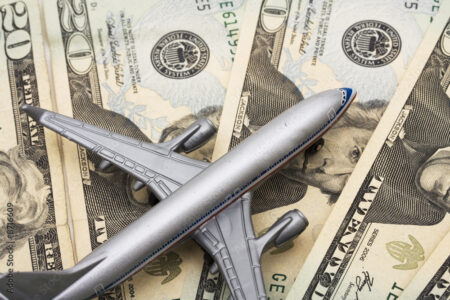One of the distinctive features of Eastern Europe’s aviation sector is that so far it remains partially untouched by the general European consolidation trend. The major groups are not as present in the region as they may be in other parts of the world. This means that the ground handling industry in that part of Europe is more vulnerable to shocks like the one that happened on February 24, 2022, when Russian troops crossed the border into Ukraine, starting what has turned into a long, drawn out conflict.
“You have a lot of local ground handling service providers in these countries. Smaller entities will be more sensitive to the ups and downs of the economic situation,” Fabio Gamba, managing director at the European Airport Services Association says.
“The situation in Ukraine clearly has taken a toll on the neighboring countries and operations.”
On the other hand, he points out that ACI-Europe indicates a surge in passenger traffic in virtually all main airports across the region, which is reflects positively on the local ground handlers.
For example, Warsaw Chopin airport’s performance in 2023 significantly exceeded forecasts, which projected slightly over 15 million passengers would be handled. A report from the airport adds that in 2023, Chopin Airport also saw a record 2.6 million charter flight passengers.
“We already have primary data for 2023, and it seems like the Polish aviation market has greatly recovered from Covid-19. The more traffic, the more work for ground handling providers,” comments Michał Wichrowski, CEO of PMA Aviation, a business consultant for airlines in Poland.
The Polish ground handling industry was auspicious not to face labor shortage like in other European countries. The labor market situation is not perfect, but at least it did not cause flight cancellations, Wichrowski notes.
Passenger traffic is also recovering in the Baltic States. For example, Tallinn airport in Estonia handled 2.96 million passengers in 2023, 7.8% up compared with the previous year and 91% of its pre-pandemic level. The positive dynamics bolstered business for the ground handling services providers in the region.
“From our company’s perspective, we were quite satisfied with the result of 2023,” says Lauri Lõo, a spokesperson for Tallin Airport.
However, the unfortunate events in Ukraine have had a certain negative impact. “The Ukrainian conflict is quite challenging when referring to its effect on business aviation flights. Due to the closure of the Russian airspace, many flights have been re-routed to different flight paths, which means Eastern European countries can lose out.”
However, on the bright side, Lõo says the company benefited from a rise in defense-related flights in the region.
Industry challenges
The picture is similar in other airports. The closure of the eastern airspace and other consequences of the ongoing hostilities weigh on operations but not enough to reverse the positive trend.
“Despite the effect of the Ukrainian conflict, last year was good for our company, almost as before the onset of the Coronavirus pandemic,” says Dominique Schiller, operations manager, Magnum FBO, which provides ground handling services in several Austrian and Slovakian airports.
“If all these flights had still been coming from Russia, with Russian passengers and Russian aircraft owners, the traffic would have been much more. Before the conflict started we had a lot of clients from Russia, especially in Vienna,” Schiller says.
Since Western sanctions barred the way for Russian business aircraft to Europe, this flow has come to a halt. Some aircraft that once served flights to Europe are now parked in Istanbul or at Russian airfields. Some have supposedly been sold to the US market. “One way or another, they are no longer flying to Europe,” Schiller says.
Combined passenger traffic at the two international airports of Romania’s capital, Bucharest, also jumped 16.6% year-on-year to 14.7 million passengers in 2023. The growth happened even despite the detrimental impact of the ongoing armed conflicts.
“Traffic values were negatively influenced by the war in Ukraine and, by the Israel-Gaza war, especially in the last months of 2023, which greatly reduced traffic to Tel Aviv, one of the main destinations from the Henri Coanda airport,” says the airport operator.
Complying with sanctions

Over the past two years, the European aviation sector has had a hard time adjusting to the details of Western sanctions against the Russian economy, businesses, and citizens. In general, it has been extremely challenging to comply with these sanctions.
For example, under the sanction regime aircraft owned, chartered or operated by Russian citizens are not allowed to enter European air space. However, there is more than that.
“Let’s say you have five passengers on a charted aircraft, four of which are Russian citizens and the fifth is not. In this case, it was presumed that if this fifth person was appointed, the main passenger who was chartering the aircraft and paid all the invoices, it was legal for the aircraft to land in Austria,” an industry insider says.
However, eventually, this approach was recognized as illegal, and in the past few months, all business aircraft carrying Russian citizens have been prohibited from landing.
“This is tricky for us and tricky to explain to our customers. In general, Russian citizens are still allowed to travel to or within Russia, but they are banned from entering the European Airspace on board private aircraft,” the business insider adds.
European ground handling companies need to be very careful because the sanction rules stipulate that no company could provide any services to Russian companies and citizens in general, especially those who are listed on any sanction list. A part of the problem is that the sanction lists are updated almost on the daily bases and access could be hard to gain.
“If an aircraft lands with a sanctioned person on board, we are not allowed to provide ground handling services. In fact, we are not even allowed to touch the aircraft,” the insider reveals.
For ground handling operators and FBOs, this has had a practical impact, because even accidentally breaking sanctions would result in a substantial fine or in the worst-case scenario, the forced shutdown of their business.
Adapting to a new reality
The Ukrainian conflict has brought both challenges and opportunities to business aviation and ground handling providers in Eastern Europe. “Due to the Russian invasion of Ukraine, the Polish airports experienced a hike in the number of operations, spanning from passenger to cargo and military flights,” Wichrowski says, adding that this prompted them to allocate investments to acquire new equipment and hire additional staff.
“Euro Jet experienced a very steady amount of business in 2023. We saw an increase in business aviation flights from the previous year throughout Central and Eastern Europe, particularly Poland and Hungary,” says Gareth Danker, Euro Jet director of sales.
There was a shift where flights that would have gone to Ukraine flew instead to Poland, Danker says. This also pushed the company to invest in operations.
“After the war in Ukraine started, Euro Jet saw a significant increase in flights going to Rzeszów, Poland. The airport did not possess the infrastructure for such a sudden increase in traffic, but we acted quickly and hired more staff, added a ramp car, and opened a crew office. This allowed us to provide the highest level of support for flights going into this airport,” Danker says.
The ground handling operators in Eastern Europe clearly benefited from a rise in military-related traffic, but it also meant that they needed to comply with new protocols that were much stricter.
“Obviously, the airports in the region are under special, additional control by Polish and NATO forces. Some of them started to be shared with the army. The staff needs to go through additional screening, and additional safety measures are implemented. It is not so easy for foreigners to get jobs in the airside, which sometimes can create a staff shortage,” Wichrowski says.
“We had to adapt and turn our focus more to military cargo flights coming to Tallinn, which also means different aircraft types, different procedures for operators, and so on. We have received increasingly strict protocols that we have to follow,” Lõo says.
“We must remember that we are close to a warzone. In fact, Poland has borders with three countries involved in this conflict: Ukraine, Russia and Belarus,” Wichrowski says.
“The government has asked the Polish not to publish pictures of the equipment used by the army and not to write online where and what was seen.
“These days, it is not so easy even to send an email to the airport or ground handling company, as there are additional firewalls. We live in the regime of additional safety measures,” Wichrowski explains.
Nevertheless, for many airports and handling companies, the increase in traffic, especially cargo and military secured a great uplift in revenues and contributed to the rise in investments into new equipment, software and staff training.
Despite all the benefits, it would be wrong to say that the ground handlers in Eastern Europe are happy over the surge in military flights.
Wichrowski says, “We are not greedy, and we are not trying to make fortunes on the war in Ukraine. Everybody in Poland wishes that we did not have all these military flights and had regular connections to Ukraine instead. But the situation is as it is, we are supporting the efforts of the Ukrainians by creating logistics hubs in Poland.”
Ukraine mulls recovery plans

In Ukraine the industry is looking forward to resuming operations. Against the odds, some airports have managed to preserve their infrastructure. For instance, the country’s largest airport Borispol kept 82% of its skilled employees who received over 66% of their previous salaries from the profit the airport generated in 2021.
Alexander Dubrevsky, the airport’s general director says, “The airport did not stop operations; it changed its strategy – before we were focused on development, but today, we are doing our best to survive.
“The airport infrastructure is in working order, the terminals and airfield operational capacity is maintained, and personnel are retained and constantly trained.
“Every day, we support the airport’s functioning – there are services here that ensure its proper functionality. Yes, we are not flying now, but the airport is alive and ready to receive cargo and passengers at any time,” Dubrevsky says.
Not all airports are that lucky. For example, Kherson International Airport reportedly suffered massive destruction during the fighting of the past two years and was “turned into ruins and cemetery of burden equipment,” according to local press. However, a staff shortage will be one of the critical challenges the Ukrainian ground handling will face when peaceful times finally return to the country.
Vladimir Semenchenko, director of the Odessa airport, said that 90% of workers were dismissed, and many found jobs in Europe.
“In the past, I held the position of vice president for ground handling of Swissport. I had quite close ties in Europe that I used, and many airports agreed to help,” says Semenchenko, adding that Ukrainian workers are now employed in different positions at airports of Budapest, Prague, London, Dublin, Amsterdam and even Canada.
Semenchenko believes once the Ukrainian sky is open again, the largest airports of Boryspil, Lvov, and Odessa will be first to get back to operation. However, the reconstruction will cost a fortune.
“In general, about US$10 billion is needed to completely restore all Ukrainian airports,” notes Bogdan Dolintse, an independent Ukrainian analyst.
Still, market players admit that as the end of the hostilities is nowhere on the horizon, the discussions of the future recovery currently are only theoretical.





